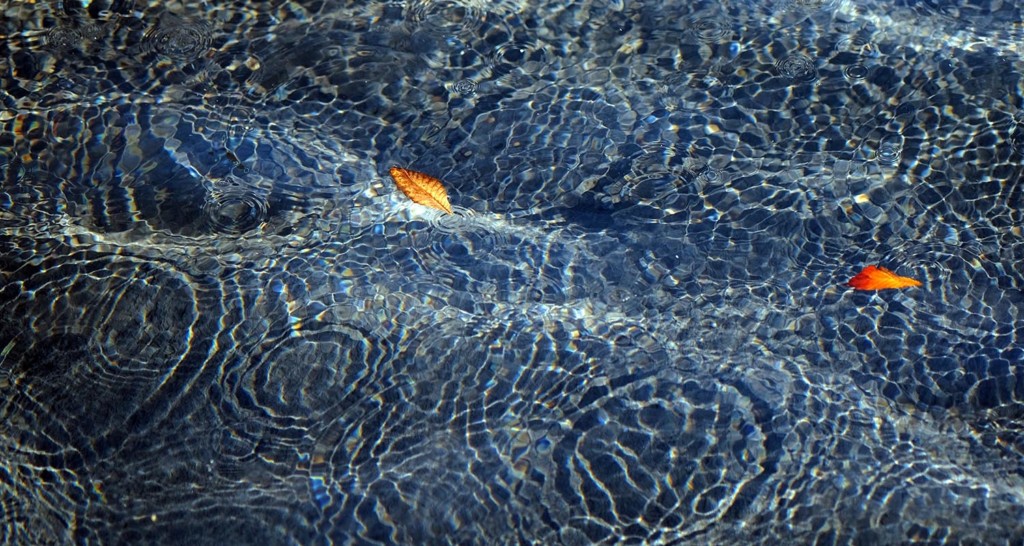
Do you know that sense of calm and wellbeing that you feel after gazing at clouds or watching the branches of a tree sway in the breeze? It’s not just the fresh air that’s relaxing you, it’s something else called fractals — the repeating patterns found throughout nature, in trees, clouds, rivers, and coastlines. Artificial fractals, like those created by computers, have the same soothing effect. Find out how these patterns work, then watch this fractal video and feel your stress melt away.
RELATED: Get free guides, ebooks, recipes and more to supercharge your health
What are fractals?
A fractal is a pattern that’s repeated over and over in increasingly fine magnification.
Picture a tree — the big branches of a tree create a large pattern. When you zoom in on those branches, you see smaller branches split off from them. Go even closer, and you see still smaller branches, and then tiny twigs. The leaves, too, have veins that mirror the shape of the branches.
“It’s spectacularly simple,” says Richard Taylor, a University of Oregon physicist and a leading researcher on fractals. “Nature has chosen fractals to be its basic building block.”
Get this — your body is full of fractals. Your veins are fractal, your nerves are fractal, even your bronchial tree is fractal.
Fractals are nature’s strategy to be more efficient and get the job done. “If we take your lungs, all of those branches are repeating, and they generate an enormous service area within a small volume,” says Taylor. “That’s what’s needed to transfer all of the oxygen through the blood.”
Fractals and stress relief
Taylor has done study after study examining the effect of fractals on stress. The results? Pretty astounding.[ref url=”https://www.mitpressjournals.org/doi/abs/10.1162/leon.2006.39.3.245 “] [ref url=”https://www.ncbi.nlm.nih.gov/pubmed/19065853 https://cpb-us-e1.wpmucdn.com/blogs.uoregon.edu/dist/e/12535/files/2015/12/Responseleonardo-15izyt2.pdf”] [ref url=”https://cpb-us-e1.wpmucdn.com/blogs.uoregon.edu/dist/e/12535/files/2015/12/ResponseNon-linear-28e9hbu.pdf”]
“We’ve looked at EEG [tests that measure electrical activity in the brain] and MRI scans, and we found that stress levels decrease by up to 60% just by looking at fractals,” says Taylor. “That’s a huge physiological change to just have glanced at something. Usually you have to pop a pill to get people that relaxed.”
As part of his studies, Taylor had people look at computer-generated fractals, scenes from nature, and Jackson Pollock’s drip paintings (which studies show are as fractal as nature’s patterns). They all lowered stress in a similar way.
The amazing thing is, the calming effect is almost instantaneous, and you don’t even have to focus on the fractal to experience its benefits.
“It’s almost as quick as it is to just say the words, the effect unfolds in seconds,” says Taylor. “Passive viewing works too — you could just put these fractals on the wall and that would be enough.”
Why are fractals so soothing?
The bottom line: Humans evolved looking at fractal patterns in nature, so they’re wired to process this visual information very quickly.
“There’s nothing too demanding visually when we look at a fractal,” says Taylor. “We’re in our comfort zone, and that puts us into a relaxed state.”
The problem is, people now spend too much time in artificial, built environments, and not enough time in nature.
“America spends billions of dollars a year on stress-related illnesses,” says Taylor. “Some of this is related to the fact we’re no longer engaging in this symbiotic relationship with nature’s fractals.”
Taylor is now working on getting fractals onto solar panels and new buildings — using these huge blank surfaces to weave fractals into urban life, and hopefully, lower the stress levels of passers-by.
How you can get the benefits of fractals
You can experience the calming effects of fractals, starting now. Here’s how:
Download a fractal screensaver: Since you don’t need to focus your attention on fractals to get their benefits, a fractal screensaver on your computer could reduce your stress without you even trying.
Make sure your fractals move: You do want some movement in your fractals, to mimic the natural movement in nature, like the gentle swaying of a tree branch, or a cloud softly morphing in shape as it passes through the sky. This keeps your brain engaged.
Get out in nature: Go for a daily walk outside, even if it’s just for 15 minutes, or eat your lunch in the park. If you’re lucky to be near a window at the office, take a moment to glance outside at a tree or a cloud.














